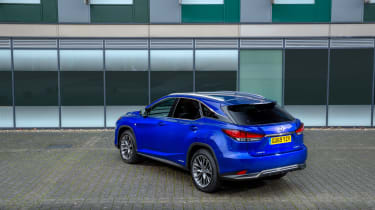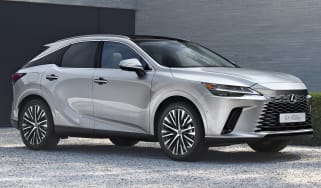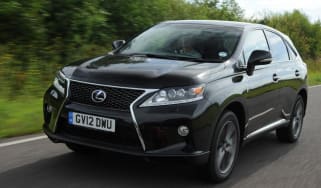Lexus RX 450h (2015-2022) review
The Lexus RX large SUV uses proven Toyota hybrid technology to provide a smooth and luxurious drive
Pros
- Well equipped
- Great reputation for reliability
- Cheaper BiK tax than diesel alternatives
Cons
- Not fun to drive
- Still relatively thirsty
- PHEV alternatives have lower BiK
| Car type | Fuel economy | CO2 emissions | 0-62mph |
|---|---|---|---|
| Hybrid | 34-36mpg | 178-180g/km | 7.7s |
The original Lexus RX was one of the first hybrid cars you could buy from a mainstream brand and the model has been revamped several times over the years. This generation, which went off sale in late 2022, is an impressive large luxury SUV, but retained some of the weak points that remained stubbornly unresolved down through the years. Also, the lack of a plug-in option (now available on the smaller Lexus NX) left this RX out of step with key rivals such as the Audi Q7, BMW X5, Mercedes GLE and Volvo XC90.
Lexus is owned by Toyota, so naturally there's sharing of technology. The key difference between the RX and more humble models like the Prius, which has a 1.8-litre petrol engine and electric motor powering the front wheels, is that this car has a 3.5-litre V6 engine and not one, but two, motors. One helps the engine drive the front wheels and the other drives the rears – so the car is effectively four-wheel drive. The battery is found under the boot floor and is charged by a combination of the engine and regenerative braking.
That means the RX can’t store nearly as much power as those rivals, so it can’t offer electric-only commuting or the bigger company-car tax savings associated with zero-emissions driving. Yet for higher-mileage users, the fact you don’t need to charge the RX from a plug is a major benefit, and the combination of 3.5-litre V6 engine plus electric-motor assistance means performance is punchy when you need it.
All versions of the RX 450h come with five doors and share the eye-catching ‘floating roof’ and wide spindle-shaped grille that help the car to stand out from the crowd. There are two body lengths: the standard 450h is a five-seater, while the RX 450h L can accommodate seven, thanks to a longer boot with a more upright tailgate, which allows an extra row of seating in the rear.
On the road, the RX majors on comfort and refinement, which will appeal to anyone unimpressed by the stiff and sporty characteristics of some rivals. Audis, BMWs and Range Rovers all offer sharper, more responsive handling, and – despite suspension tweaks made since it launched – the Lexus still leans more in corners.
The ride is smooth and comfortable, though, and the plush and beautifully finished interior – loaded with kit even in 'entry-level' trim – means driver and passengers alike feel cosseted. Wind and road noise are nicely suppressed, but the engine revs soar noisily when you make all but the subtlest of throttle inputs.
The big Lexus is as roomy as you’d expect, apart from in the rear, where boot space is more constrained than in most SUV rivals due to the batteries under the floor. It wins points back as the electric-motor-driven rear axle means there’s no transmission tunnel encroaching in the rear footwells. There’s a comprehensive array of safety features, including 10 airbags, and the RX 450h performs well in Euro NCAP crash tests. Lexus reliability is the stuff of legend, too.
In short, the RX is an attractive proposition for buyers who like its eye-catching looks, luxury and refinement, and want a car that’s more environmentally sound than a traditional diesel SUV. For more detailed look at the Lexus RX, read on for the rest of our in-depth review...






